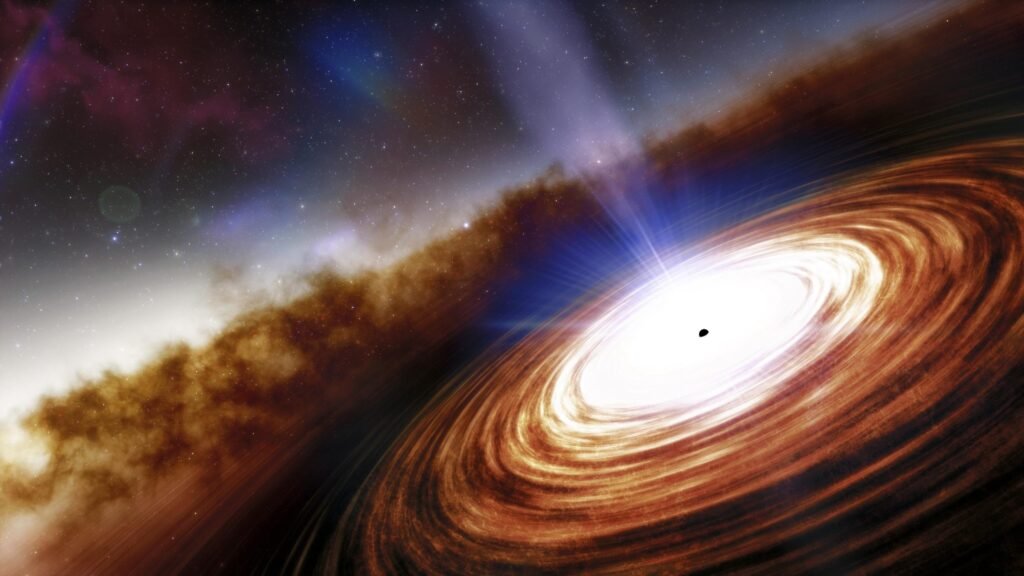Quasar – Powerful Radio Jets Emitter
Quasar is the one shooting out powerful radio jets which is the newly discovered substances from the early universe.
Quasar, called P172+18 has been recently discovered by astronomers using the European Southern Observatory’s (ESO) Very Large Telescope (VLT). It takes about 13 billion years for the light from this quasar to reach Earth, depicting the vast distance between the two. It dates back to the time when the universe was just 780 million years old. Although this quasar is not the farthest but is the most distant radio-loud quasar or radio jet-emitting quasar.
Black Holes – Powerhouse
Quasars are powered by supermassive black holes resulting in extremely bright celestial objects that lie in the center of some galaxies. The brightness level of quasars is so high that the very galaxies containing them get eclipsed. Quasars prove out to be strong sources of radio-wavelength emissions as they are radio-loud and shoot out powerful jets. Powerful jets were detected that led to the detection of quasar as a radio source at the Magellan Telescope at Las Campanas Observatory in Chile by scientists.

Eduardo Bañados of the Max Planck Institute for Astronomy in Germany, who led this discovery alongside ESO astronomer Chiara Mazzucchelli said in a statement-
“As soon as we got the data, we inspected it by eye, and we knew immediately that we had discovered the most distant radio-loud quasar known so far.”
The supermassive black hole that’s about 300 million times more massive than our sun is the powerhouse of the distant, jet-shooting quasar and is growing fast swallowing and pulling in surrounding matter with its gravity.
Mazzucchelli said in the same statement that –
“The black hole is eating up the matter very rapidly, growing in mass at one of the highest rates ever observed.”
Establishing Connection Link
Researchers are trying to establish a link between the jets that shoot out of radio-loud quasars like P172+18 and the connection between the quick growth of black holes like this. They think that gasses are getting pushed into the gravitational grip of these black holes due to the powerful jets’ interaction with nearby gases that increase the amount of gas falling into them.
Unveiling new findings of this quasar will help scientists to learn further about supermassive black holes in the universe.
You can find the work in The Astrophysical Journal which was published on March 8.

1 Comment
Pingback: Top 5 Space Story this Week - Craffic